THE WORLD HINDU CONGRESS 2023 HELD IN BANGKOK_SPEECHES (Part Two)
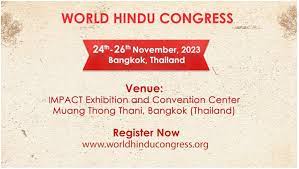


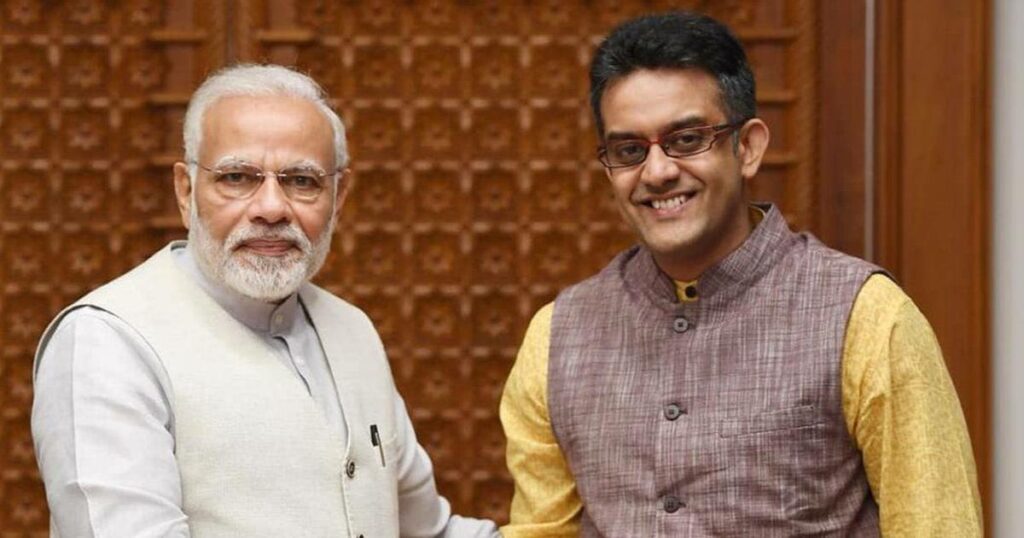
Vikram Sampath
“India is always seen through the eyes of her invaders. If you observe the way our history textbooks are written, it’s a long list of battles that we, as Bharatas, have lost, right from the invasions of the Greeks, Scythians, Huns ,Shakas, to the Arabs, Turks, Timur, Portuguese, Dutch, French, and British. They all kept coming, and the narrative often portrays us as succumbing to invasions. However, if we are the only pre-Bronze Age civilization that is still alive, there must have been some courage and resistance from our ancestors. There must have been wars that we also won.
The question arises: why is it that these victories, these heroes, and, more importantly, heroines, don’t feature prominently in our popular Bharatiya historiography? The history of the country is often rooted and centered around the city of Delhi. While there’s nothing against the city, it seems to dominate the historical discourse, even though many small, insignificant dynasties that ruled Delhi are forced into our learning, even those with little contribution to our civilizational heritage. However, vast swathes of the country, such as the south, northeast, the Rajputs, Marathas, Shahanas, Rashtrakutas, Cholas,Palas, and Ahoms, barely feature in the larger historiography of Bharat. It’s time for Bharat to reclaim her history from Delhi-centricity
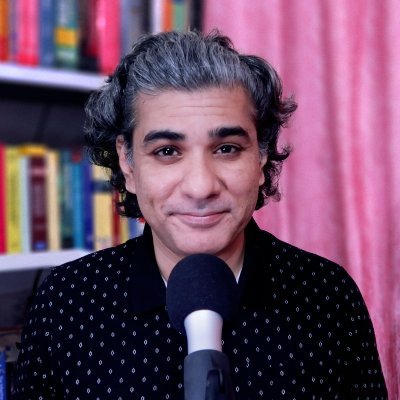
Abhijit Chavda
“We were discussing the Middle East crisis. The Middle East has been in crisis, as we know, since the 1950s, 40s, even before that. It’s always in crisis, permanently in crisis. I half-jokingly said that I have a short solution to the Middle East crisis: convert them to Hindu Dharma. It will be over in an instant. My esteemed co-panelists on that TV debate all blew their tops, saying, “How can you say that ,blah blah blah?” So that is the power of narrative. The dominant narrative worldwide is that our Dharma, Hindu Dharma, is regressive, backward, and capable of nothing good, and so on. That’s the power of the narrative taken at face value, taken as self-evident, and that is what we are up against.
So, what is a narrative? Narrative is a story, and a story can be based on facts or in fiction. Fiction is lies; facts are just factual evidence. First of all, we have to ask ourselves, who are we? Who are all the Bharatiya people, the Hindu people? Who are we all? Secondly, where are we coming from? What’s our past history so that we understand who we are better? And thirdly, where are we going? What ‘s the way forward? What’s the future like? What is our envisioned future like 100years down the line, a thousand years down the line? We need to have these components of the narrative very clear.
So, to do that, first of all, we have to examine our history. Right now, our history is full of distortions. Our history textbooks are full of distortions. The historians, our esteemed eminent historians, are all anti-Bharat, anti-Dharma, anti-Hindu. Hindu Dharma; they’re all leftists, Marxists. So that’s what we are up against. First of all, we need to correct our history. We need to make it fact-based, not falsehoods based. So, our history is immense. We probably have a 50,000-year-old history of Bharatiya civilization and culture. The archaeological evidence that I have found this far goes back at least 10,000 years. The city of the ancient archaeological site of Bhirdana in Haryana is almost 10,000 years old. So, first of all, we need to examine our history and correct the distortions. The recent history, the 20th century onwards, history itself, is almost something that’s in living memory that’s full of distortions. We need to reexamine the great figures about whom geographies have been written, like Mr. Gandhi, Mr. Nehru. We have to reexamine the legacy of great figures like Mr. Bose, like Mr. Savarkar, and so on. So, we need to re-examine the recent history. The history of the 18th and 19th century also is full of falsehoods and distortions.
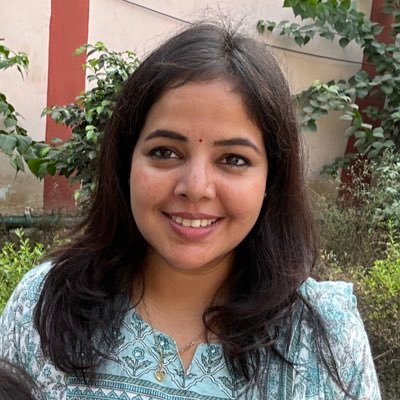
Swati Goel Sharma
“We of course know about the 26/11 terrorist Ajmal Kasab, he was supposed to die as a Hindu named Samir DineshChaudhari and it had not had it not been for the great Tukaram Omble this Hindu Terror Theory would have really gotten a boost. So the question occurs why is a Hindu Terror Theory being pushed and why anti-hindu crimes are hidden even such heinous cases such as the onei n kanpur that happened seven years ago but the killers just got a death sentence from the NIA Court. A schoolteacher named Ramesh Shukla was gunned down on one afternoon while returning from school on a bicycle so nobody could crack the case the police said we have no leads so they just closed down the investigation.
Later it was revealed that three men from kanpur they wanted to join ISIS and they somehow got in touch with some handlers in Syria and they killed Ramesh Shukla. They recorded the video and sent it on some messaging app to show that say they were so capable of killing akafir. And how did they identify Ramesh Shukla ? Because he was wearing a tilak, he was wearing a kalava, he was wearing a dothi. So it was easy to spot him. Such a big case and it hardly made any news and the sentiment you know that the motivation for the crime which is likeblatant kafir hate it was nowhere in the news media”.
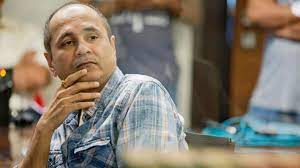
Vipul Amrutlal Shah
“”Movie as a format is a very powerful tool. It can build narratives, change narratives, and create something that is unimaginable. However, in India, we have yet to realize the power of movies and what they can do inbuilding a nation or shaping our narrative.
Let me give you an example of what America does. The USA has effectively used the soft power of movies to create an image of being the world leader. Movies play a crucial role inbuilding their narrative. From Rambo in Afghanistan to Top Gun destroying enemy targets, even Avengers portraying American heroes as the world’s only hope, these films contribute to the narrative that America is powerful. Despite historical losses in wars, cinema has played a vital role in shaping a perception of American military might.
South Korea and China have also successfully utilized cinema for nation-building. However, in India, cinema has primarily been used to build a negative narrative against Hinduism. For decades, a narrative has been created that makes Hindus feel guilty about their religion. Cinema in India has not realized its potential to shape a positive narrative. We need to show the right side of Hinduism and use cinema as a powerful tool for that purpose. As a successful Bollywood producer and director, I have been sensitive to not depict any negative aspects of any religion in my films. However, there exists an ecosystem that consistently portrays our religion in a bad light, and it’s time to correct it.
I’ll share an example from my film, The Kerala Files. There was an immediate effort to discredit it, calling it propaganda and questioning the numbers presented in the movie. Despite media reluctance to discuss the truth behind the film, it created an impact and initiated a national discussion. This illustrates the power of cinema in shaping narratives

Adv. Vishnu Shankar Jain
“We can’t lose not even an inch of that land. That entire land is sacred to us. These are the pictures. These are the evidences. This shows that these are ruins of a Hindu temple, and nothing has been done. Let me say it with a lot of sense of responsibility. Ruins of the Hindu temple have been converted into a mosque, and they’re using it as a mosque, which is not the religious character of this place.
Suppose, for example, I entered into a mosque and install an Idol there. Can that mosque be termed as a temple? There can be only one answer. That mosque cannot be termed as a temple. In the same manner, if you enter into a temple and you offer namaz, the characteristics of the temple will not go. Once a temple, always a temple. Our ruins of the temple have been used as a mosque. Now, next to me are the pictures. If you can pause for a moment. One picture. This is a veil that we have found. Shivlingum up on the right side. If you can see a little bottom of this picture, there is a Wazukhanathere.
We have found Shiv Lingam during Advocate commissioner Survey on 16th of May 2022, and that area was sealed by the orders of the court. I immediately went to the court and got that area sealed, and the sealing order has been affirmed by the Supreme Court by 28th of May2022, and that sealing order is still remains intact. And we have moved the petition before the honourable SupremeCourt to investigate this area also and see whether it’s a fountain or not. We only want to suggest that this is not a fountain. And that inquiry order has been already directed by the honourable High Court, and the matter is pending adjudication before the Supreme Court.”
